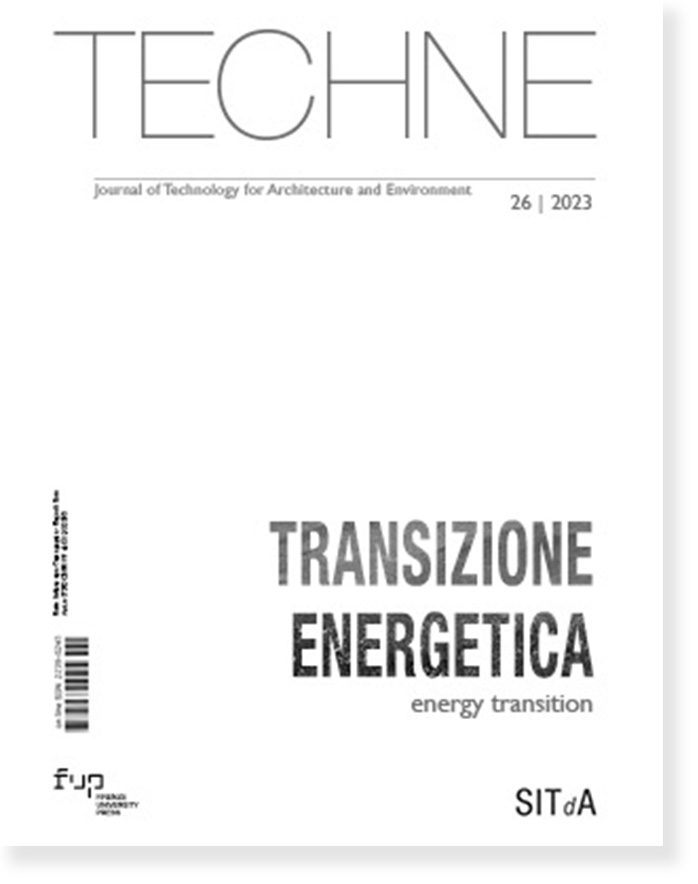Published 2023-10-31
Keywords
- Safe operating space,
- Critical processes,
- Climate change,
- Energy transition,
- Complexity
How to Cite
Copyright (c) 2023 Massimo Palme

This work is licensed under a Creative Commons Attribution 4.0 International License.
Funding data
-
Agencia Nacional de Investigación y Desarrollo
Grant numbers FONDECYT REGULAR 1200275 -
Agencia Nacional de Investigación y Desarrollo
Grant numbers FONDECYT REGULAR 1200275
Abstract
Technological imagination and innovation processes have always been at the basis of economic growth and the expansion of human domination over other species. Nevertheless, something seems to have got stuck. Can the leaps in technological development that make it possible to “reset” the clock to start growing again in a sustained form really be infinite? Or are we facing something different, a limit in the structural stability of the ecosystem itself? The worsening of the polycrisis – certainly also energetic – will require drastic solutions but should also finally allow the (re)emergence of radical ideas of renewal and transformation, as well as concrete proposals for spatial organisation associated with the new lifestyles they prefigure.
Downloads
References
Beckerman, W. (1994). "Sustainable Development": Is it a Useful Concept? Environmental Values 3 (3), 191-209
Bettencourt, L., Lobo, J., Helbing, D., Künert, C., West, G. (2007). “Growth, innovation, scaling, and the pace of life in cities.” PNAS 104 (17), 7301-7306
Bourelle, J. (2014). Zero energy buildings and the rebound effect: A solution to the paradox of energy efficiency? Energy and Buildings 84, 633-640
Brundtland, G., et al. (1987). Our Common Future. Oxford, Oxford University Press.
Butera, F. (2022). Affrontare la complessità. Edizioni Ambiente
Crutzen, P., Stoermer, E. (2000). The Anthropocene. In Global Change Newsletter, 41, 17
Chwałczyk, F. (2020). “Around the Anthropocene in Eighty Names—Considering the Urbanocene Proposition”. Sustainability 12 (11): 4458
Dominati E, Patterson M, Mackay A (2010) A framework for classifying and quantifying the natural capital and ecosystem services of soils. Ecol Econ 69(9):1858–1868
Daly, H. E. (1995). “On Wilfred Beckerman’s critique of sustainable development.” Environonmental Values 4:49–55
Daly HE (1997) Georgescu-Roegen versus Solow/Stiglitz. Ecol Econ 22(3):261–266
Forman, R. (2008). The urban region: natural systems in our place, our nourishment, our home range, our future. Landscape Ecology 23(3), 251–253
Gallopín, G. (2020). “Cities, Sustainability, and Complex Dissipative Systems. A Perspective”. Frontiers in Sustainable Cities 2:523491
Gallopín, G., Hammond, A., Raskin, P., Swart, R. (1997). Branch Points: Global Scenarios and Human Choice. Report of PoleStar Project, Stockholm Environment Institute
Gell-Mann, M. (1993). The quark and the jaguar. Adventures in the simple and the complex. New York, USA: Henry Holt and Company
Georgescu-Roegen, Nicholas (1971), The Entropy Law and the Economic Process. Cambridge, Massachusetts: Harvard University Press.
Giampiero, M., Mayumi, K. (2018). Unraveling the Complexity of the Jevons Paradox: The Link Between Innovation, Efficiency, and Sustainability. Frontiers in Energy Research 6,
Herrington, G. (2021). “Update to limits to growth: Comparing the World3 model with empirical data.” Journal of Industrial Ecology 25 (3), 614 – 626
Kauffman, S. (1993). The origins of order: Self Organization and Selection in Evolution. Oxford University Press
Kauffman, S. (1995). At Home in the Universe: The Search for Laws of Self-organization and Complexit. Oxford University Press.
Kondratieff N. D. (1935). The long waves in eco‑nomic life. Rev Econ Stat. 17(6):105-115
Koolhas, R. (2016). Constant: New Babylon. Hatje Cantz Publisher, 2016.
Jevons, W. S. (1865). The Coal Question. MacMillan and Co., London
Lai, S., Han, H., Ko, P. (2013). “Are cities dissipative structures?”.International Journal of Urban Science 17 (1), 46 – 55
Meadows, D., et al. (1962). Limits to growth. UNIVERSE
Meadows D. H. (2001) Dancing with systems. Whole earth (Winter edition).
Moore, J. (2016). Anthropocene or Capitalocene? Nature, History, and the Crisis of Capitalism. Kairos Ed.
Nieuwenhuys, C. (2009). La Nueva Babilonia. Gustavo Gili Ed., Barcelona
Piketty, T. (2013). Capital in the Twenty-First Century. Harvard University Press
Pievani, T. (2021). Human techno-evolution and the future. TECHNE - Journal of Technology for Architecture and Environment, (2), 18-21.
Prigogine, I. and Stengers, I. (1984). Order Out of Chaos. Bantam Ed.
Rees, W. (2012). “Cities as Dissipative Structures: Global Change and the Vulnerability of Urban Civilization”. In: Weinstein, M., Turner, R. (eds) Sustainability Science. Springer, New York, NY
Rockström, J., Steffen, W., et al. (2009). Planetary Boundaries: Exploring the Safe Operating Space for Humanity. Ecology and Society, 14 (2), 32
Scheffer, M., Carpenter, S., et al. (2012). Anticipating Critical Transitions. Science 338 (6105), 344-348.
Turner, G. M. (2008). “A comparison of The Limits to Growth with 30 years of reality”. Global Environmental Change 18, 397 – 411
West, G. (2017). Scale: The Universal Laws of Growth, Innovation, Sustainability, and the Pace of Life in Organisms, Cities, Economies, and Companies. Penguin Press Ed.
Wiens JA (2005). "Toward a unified landscape ecology". In Wiens JA, Moss MR (eds.). Issues and perspectives in landscape ecology. Cambridge: Cambridge University Press. pp. 365–373
Wu, J. (2013). Landscape sutainability science: ecosystem services and human well-being in changing landscapes. Landscape Ecology 28, 999-1023






